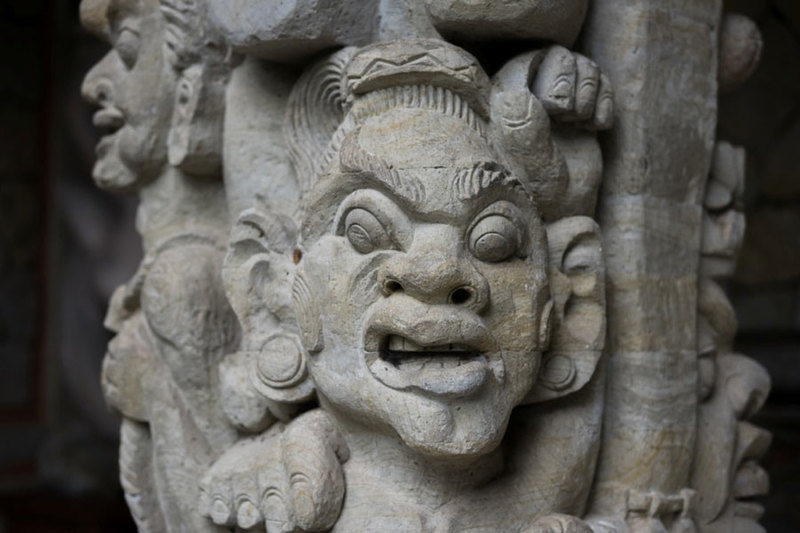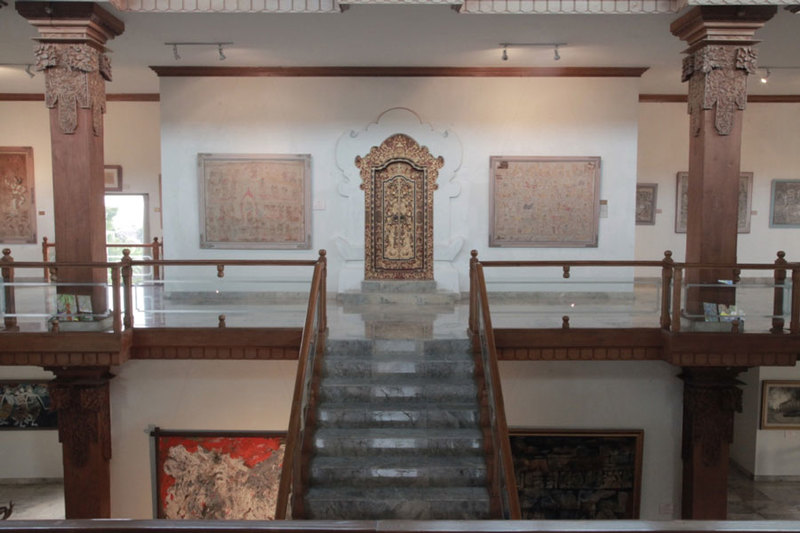Bali’s beaches and streets seem to become busier by the minute. If you can’t stomach the crowds, the island still offers other places worth visiting. Enjoying God’s creations in the form of Bali’s natural landscape is one thing, but human’s creations in form of art shouldn’t be ignored either. Bali and art are inseparable, and we have compiled a list of museums where both worlds collide.
Puri Lukisan Museum
Bali’s beaches and streets seem to become busier by the minute. If you can’t stomach the crowds, the island still offers other places worth visiting. Enjoying God’s creations in the form of Bali’s natural landscape is one thing, but human’s creations in form of art shouldn’t be ignored either. Bali and art are inseparable, and we have compiled a list of museums where both worlds collide.

Nowadays, visitors can enjoy various delightful works from local and international artists displayed in four main areas:
- The East building displays a collection of early works by local artists from Ubud and its surrounding villages;
- The North building showcases the works of Pita Maha artists, fine ink drawings by I Gusti Nyoman Lempad, and classic works by foreign artists in the 1930s;
- The West building highlights postwar modern art by Balinese painters, and;
- The South building introduces the museum’s history and is also used for special exhibitions.
Puri Lukisan Museum
Address: Jl. Raya Ubud, Ubud, Kabupaten Gianyar, Bali 80571
Opening Hours: 9 AM – 6 PM, daily
Telephone: (0361) 975 136
Website: www.museumpurilukisan.com
Le Mayeur Museum
In 1932, Belgian painter Adrien-Jean Le Mayeur first set foot in Sanur, Bali, and instantly fell in love – not only with the island, but also with the then 15-year-old Legong dancer, Ni Nyoman Pollok. An endless source of inspiration on the Island of the Gods gave him a creative and successful life until the Japanese came and put him under house arrest. After the war, he continued working in Bali. Le Mayeur Museum is the proof that Indonesian government does care about the preservation of art.

In 1957, just 12 years after the proclamation of Indonesian Independence, the Indonesian government issued the Deed of Conveyance No. 37 1957, stating that Le Mayeur gave all of his possessions, including his land, his house, and his arts, to his wife Ni Pollok as a gift. The agreement also stated that Ni Pollok conveyed what she had inherited from Le Mayeur to the Indonesian government to be used as a museum. A total of 88 paintings created by Le Mayeur are now displayed in the museum managed by Bali Museum.
Le Mayeur Museum
Address: Hang Tuah Street, Sanur Beach, Denpasar 80227
Opening Hours: 8.30 AM – 3.30 PM, daily
Telephone: (0361) 286 201
Neka Art Museum
Pande Wayan Suteja Neka was born to an artist father and has been embracing his destiny in preserving Balinese and Indonesian art since he was a young boy. Even when he was a teacher, he spent his free time selling art from local painters in his own art shop. He has his own strength of sensing beautiful works, especially portraits with true Balinese character.

Neka Art Museum is now the home of many art forms in various styles: classical puppet style painting, Ubud style painting, Batuan style painting, arts of Arie Smit, Young Artists style paintings, contemporary Balinese Paintings, Arts of I Gusti Nyoman Lempad, art by foreign artists, contemporary Indonesian works, and a collection of almost 300 Keris (Javanese traditional daggers).
Neka Art Museum
Address: Jalan Raya Campuan, Kedewatan Village, Ubud
Opening Hours: 9 AM – 5 PM, daily
Telephone: (0361) 975 074
Website: www.museumneka.com
Rudana Museum
Nyoman Rudana is a renowned Indonesian art connoisseur and collector. To share his love for art with the public, he established the Rudana Museum.

Open to public since 1995, the museum reflects how much Rudana loves Bali and Balinese art. The three-storey museum is in line with Balinese philosophy:
- Tri Angga: Three parts of the human body: head, body, and legs;
- Tri Manggala: The division of a compound into three sections: the inner, outer, and middle sections;
- Tri Loka: The concept of a universe, which is divided into an underworld, a middle ground and the heavens.
Rudana Museum
Address: Jalan Cok Rai Pudak 44, Peliatan, Ubud|
Opening Hours: 9 AM – 5 PM, daily
Telephone: (0361) 975 779
Website: www.museumrudana.com
Agung Rai Museum of Art
Starting from humble beginnings, Anak Agung Gde Rai persistently followed his passion for art, specifically Balinese art. Having lived in a village full of brilliant artists, young Agung Rai was once an art dealer, selling paintings created by his neighbors to foreign tourists. With the money he earned, he then opened his own art gallery named Agung Rai Fine Art Gallery and finally built an art museum, also under his own name, Agung Rai Museum of Art, which was officially in 1996.

Agung Rai has three main purposes for his museum:
- To collect and preserve artworks;
- To develop and preserve the art of painting, sculpture, dance, music, and various other cultural art forms, and;
- To provide means and infrastructure for the local society to learn various artistic skills.
Agung Rai Museum of Art
Address: Jl. Raya Pengosekan Ubud, MAS, Ubud, Kabupaten Gianyar, Bali 80571
Opening Hours: 9 AM – 5 PM, daily
Telephone: (0361) 976 659
Website: www.armamuseum.com
The Blanco Renaissance Museum
Antonio Blanco was a narcissist. He wanted everyone to see his signature in everything he created, not only the painting, the frame, but also his own museum. The Blanco Renaissance Museum was his last gift to art in Bali. In the enormous three-storey mansion, today’s visitors can savour Blanco’s works: the paintings, collages, illustrated poetry, and lithographic artworks, all based on his favourite subject: beautiful Balinese women with thought-provoking style.

Open to public since 1998, the museum is also surrounded with other points of interest to make visitors comfortable during their visit. A gift shop, a café, and the Blanco’s family temple are open to the public to enjoy. This museum is the perfect place to savour Balinese life in motion, with a visit to the family temple or stroll through the gardens.
The Blanco Renaissance Museum
Address: Jalan Raya Penestanan No.8, Sayan, Ubud, Kabupaten Gianyar, Bali 80571
Opening Hours: 9 AM – 5 PM, daily
Telephone: (0361) 975502
Website: www.blancomuseum.com







